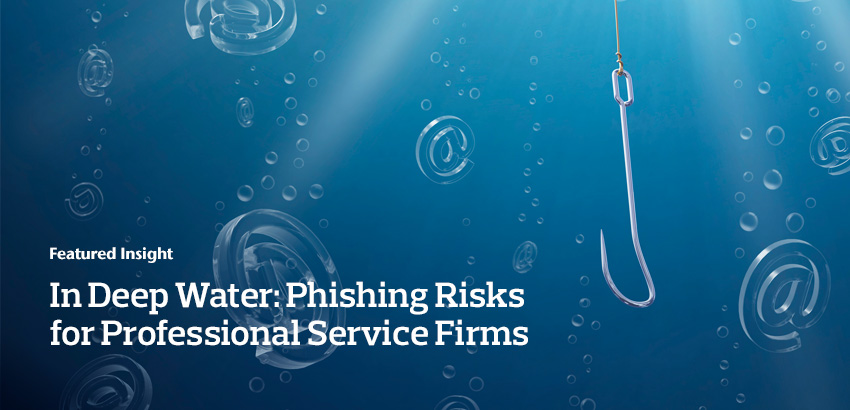Insight Archive | Subscribe to our insights >>
Aon | Professional Services Practice
Release Date: May 2021

Aon | Professional Services Practice
In deep water: phishing risks for professional services firms – executive summary
Release Date: May 2021 Ransomware is a leading risk for professional service firms in 2021 – Aon’s Cyber Solutions Group statistics show that ransomware attacks have increased 486% in two years.
- Attackers are very sophisticated
- They employ behavioral psychologists
- They employ professional translators
- They do their research and know:
- You (they have your name, email address, and photograph)
- Your clients
- Your expertise, experience, and specialty
- Personal information shared on social media (from where you live, to your dog’s name, including information leaked on the dark web, including SSN’s)
- Your colleagues
- Your position in your organization – who you report to and who reports to you
- Your vacation schedule and where you go
- Attackers have all the information they need to
- Craft convincing messages
- Impersonate you to someone else (e.g., a client)
- Impersonate one of your clients or vendors to you
- Convincingly emulate a prospective client
- The pandemic and subsequent shift to remote working environments has given the attackers new opportunities to exploit issues with carefully crafted messages
- Statistically, attackers need to send only 20 messages to have a high chance that at least one person will click a link or open an attachment, potentially releasing malware into your systems
- You and your employees are the “gatekeepers”
- When they get past you, everything else is technology and they are very, very good at technology
- The attackers only need to be lucky once
- Your best defense is training the gatekeepers, often and repetitively
What can you do?
- Be vigilant – look out for spoofed emails and names that are not quite right
- Think twice before opening documents or clicking on links
- Double-check changed instructions using “out of band” communication with parties to a transaction
- If you think you have a problem, tell someone – the sooner the better
- Establish and follow protocols – changes and exceptions are always red flags

